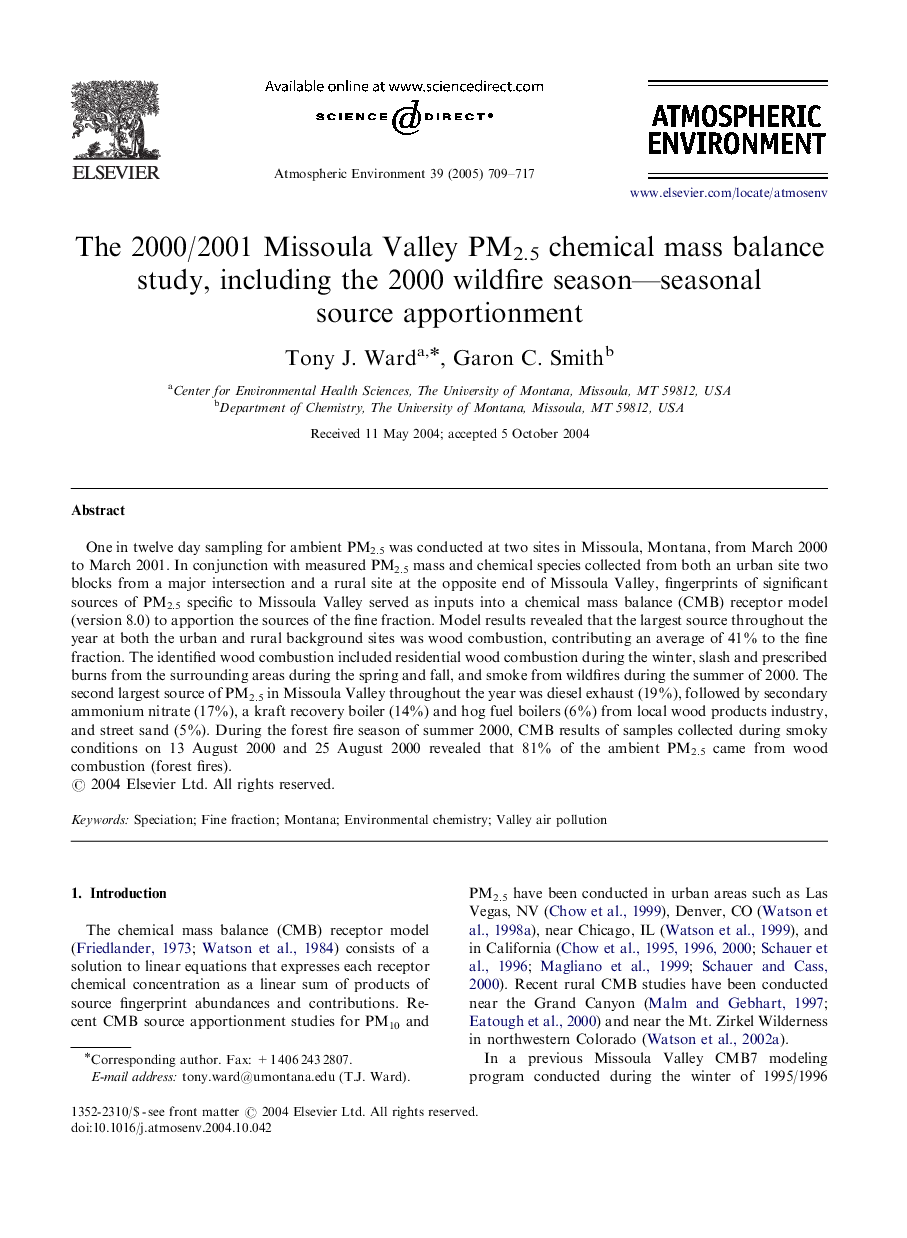| Article ID | Journal | Published Year | Pages | File Type |
|---|---|---|---|---|
| 9458735 | Atmospheric Environment | 2005 | 9 Pages |
Abstract
One in twelve day sampling for ambient PM2.5 was conducted at two sites in Missoula, Montana, from March 2000 to March 2001. In conjunction with measured PM2.5 mass and chemical species collected from both an urban site two blocks from a major intersection and a rural site at the opposite end of Missoula Valley, fingerprints of significant sources of PM2.5 specific to Missoula Valley served as inputs into a chemical mass balance (CMB) receptor model (version 8.0) to apportion the sources of the fine fraction. Model results revealed that the largest source throughout the year at both the urban and rural background sites was wood combustion, contributing an average of 41% to the fine fraction. The identified wood combustion included residential wood combustion during the winter, slash and prescribed burns from the surrounding areas during the spring and fall, and smoke from wildfires during the summer of 2000. The second largest source of PM2.5 in Missoula Valley throughout the year was diesel exhaust (19%), followed by secondary ammonium nitrate (17%), a kraft recovery boiler (14%) and hog fuel boilers (6%) from local wood products industry, and street sand (5%). During the forest fire season of summer 2000, CMB results of samples collected during smoky conditions on 13 August 2000 and 25 August 2000 revealed that 81% of the ambient PM2.5 came from wood combustion (forest fires).
Related Topics
Physical Sciences and Engineering
Earth and Planetary Sciences
Atmospheric Science
Authors
Tony J. Ward, Garon C. Smith,
